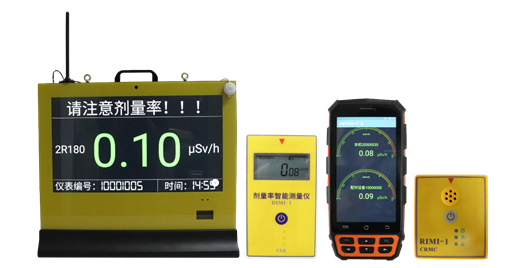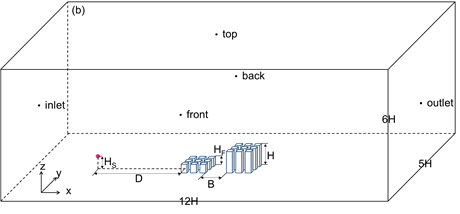[ Instrument Network Instrument R & D ] Recently, the Shenyang Institute of Automation Branch of the Chinese Academy of Sciences in Guangzhou ("Guangzhou Branch") independently developed important models for the evaluation of radiation intensity dose intensity and radiation monitoring systems.

Radiation monitoring products

Model output of radioactive material sedimentation rate in various districts of Guangzhou

Computational Domain / Building Structure / Physical Geometric Model
In order to implement the 13th Five-Year Plan for Nuclear Safety and Radioactive Pollution Prevention and 2025 Prospects, the 13th Five-Year Plan for Environmental Protection in Guangzhou and other plans, strengthen the monitoring of nuclear radiation pollution sources, and form environmental quality monitoring and early warning monitoring The radiation monitoring network requirements combined with emergency monitoring, the radiation monitoring project team of the Guangzhou Branch IoT Technology and Application Research and Development Center has developed a radiation monitoring system with radiation monitoring, evaluation, early warning and planning functions; including the source-machine fixed end, self-organized 5 sets of radiation monitoring products and 2 sets of APP software (radiation monitoring software and large-screen display terminal software) for network gateway, intelligent handheld terminal, wireless dose rate meter and large-screen display terminal.
The Guangzhou branch project team and the City University of Hong Kong jointly conducted a study on the diffusion model of radioactive materials in cities. The two parties cooperated in the evaluation of radiation dose intensity. Aiming at the effects of long-range radioactive materials, the Gaussian plume model and the Lagrangian particle tracking system (Gaussian puff model) were considered to take into account changing meteorological conditions and radioactive sources to develop a more accurate And a mathematical model suitable for long-distance and large-scale migration, collected 10-year meteorological records (2009-2018) and used as model input data to evaluate the impact of a nuclear power plant hypothetical accident on the city. Aiming at urban building groups, a three-dimensional small-scale diffusion model was developed. A computational fluid dynamics model based on the Navier-Stokes equations was used to propose a building structure model. In consideration of the obstacles in front of the building and the incoming flow and radioactive sources, the target buildings in the rear were considered. Under the influence of radiation, by changing the distance between the radioactive source and the obstacle, the height of the radioactive source, the distance between the obstacle and the target, the height of the obstacle, and the type of pollutants of the radioactive source, an orthogonal experiment is carried out to comprehensively examine the influence of various parameters on the diffusion, which can quickly Estimate the spread of radioactive material between the clusters. The research results have been published in the Journal of Hazardous Materials.
In recent years, around the field of radiation monitoring, Guangzhou Branch has made important progress in the areas of hardware research and development, data acquisition, data analysis, and model building. It has signed a framework contract for sales of radiation protection intelligent monitoring equipment with leading companies in the industry, which has promoted products in China Several large-scale nuclear power plants have achieved demonstration applications, and continue to deepen cooperation with the Nuclear and Radiation Safety Center of the Ministry of Ecology and Environment to help build a national radiation monitoring network.
basketball training machine, basketball trainer, basketball shooter
Yi He Technology (Shenzhen) Co.,Ltd , https://www.ballshootmachines.com